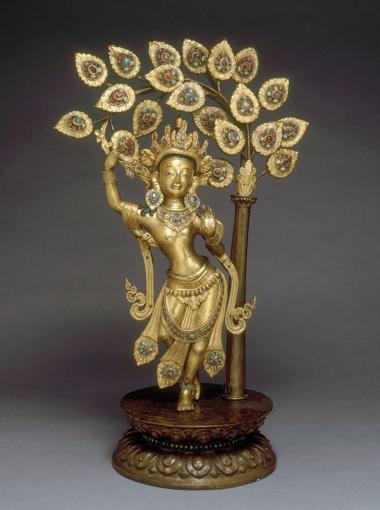Here technical perfection does not in the least hinder the aethereal charm of the expression, and the artist was able to transcribe all the nostalgia of the Tale of Genji, the most emblematic work of Japanese classical literature in the Heian period, a subtle critique of Court morality attributed to Murasaki Shikibu, a woman.
The foreground displays stems of chrysanthemums and bell-flowers bent by the wind and represented with naturalism: this décor is repeated on the back of the lid and the inner tray of the writing-box. The latter contains four incense boxes, whose décor recalls a chapter of Book LII of the Tale of Genji (Genji monogatari): a bouquet of mallow flowers in a lacquer basin, a nightingale singing amidst branches of pines and plumtrees, two crickets on autumn flowers.
The décor of the lid displays a garden and a pavilion where Prince Kaoru is meditating, seated by his writing-box, while on the opposite side mountains stand out against a hirameji décor, recalling twilights in the style of Yamato-e landscapes.
The lacquer is spread on a wooden base in several layers, with separate drying and pumicing times. The technique of the maki-e (scattered painting) décor implies sowing gold and silver powder upon a décor previously designed in lacquer and coated with other layers of lacquer.
The practice of calligraphy and poetic composition was a prerogative of the wives of lords and aristocrats. Thus, the writing-box, the casket intended for paper and the low table formed an assortment in a homogeneous decor. Such ensembles were widespread in the Edo period, denoted by the rise of a new city and middle-class culture risen from the economic development and prosperity of the large cities.

